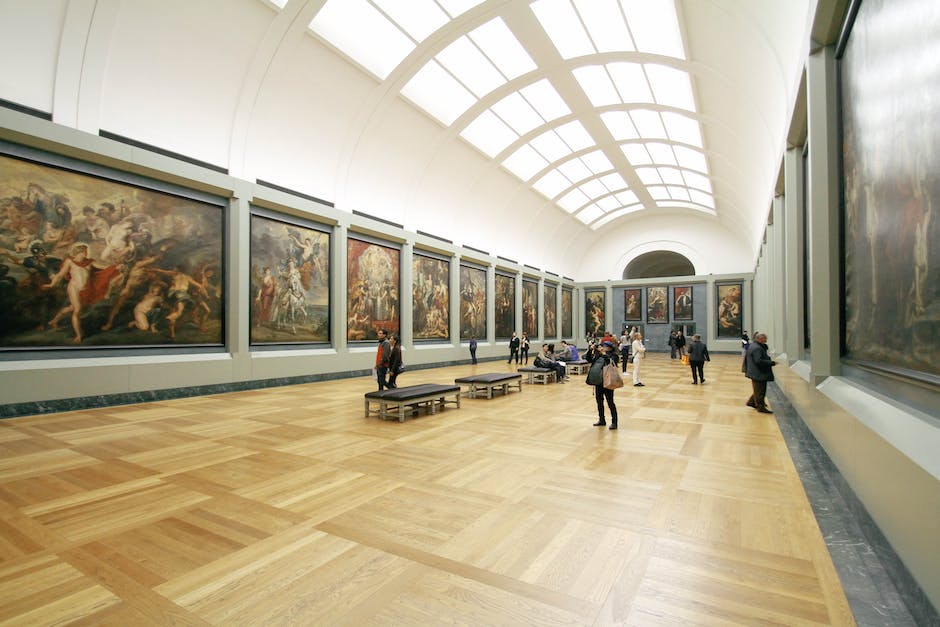The world of art is an enigma wrapped in a myriad of secrets and sophisticated ciphers, waiting to be deciphered by those with a passionate curiosity and discerning eye. At the heart of this enthralling realm lies the mystique of art provenance—an intricate tapestry that weaves together the essence of authenticity and the prestige of an artwork’s lineage. Understandings of ownership can transform a silent canvas into a loud symphony of historical whispers, each brushstroke enriched by a narrative meticulously chronicled. As we pry into the nuanced dealings of art moguls and the clandestine language they speak—a tongue that orchestrates the ebb and flow of cultural treasures—we embark upon a voyage of discovery. We traverse uncharted territories, illuminating underappreciated creative works that humbly reside in shadows, yet yearn for the light of recognition. Along this odyssey, the invisible art of conservation unravels before us, casting light on the guardians who ensure that beauty, once captured, is never relinquished to the ravages of time.
The Mystique of Art Provenance
How Provenance Elevates an Artwork
Imagine entering a gallery and beholding a canvas drenched in the most vivid colours, the strokes capturing a moment so poignant that the air around seems to echo its sentiment. As onlookers savour the visual feast before their eyes, a whisper passes through the crowd and enchants the space with newfound reverence: that painting there, it was once cradled in the hands of a figure from history, its journey as rich as the hues that dance upon it.
Provenance, dear fellow art enthusiasts and curious minds, is that golden thread which weaves through time to connect an artwork to its past owners and origins. It is not merely a chronicle of ownership, but a lush tapestry imbuing each piece with an unrivalled narrative and authenticity that heightens its allure to collectors and history buffs alike.
To grasp the essence of provenance, one must recognise it as the biography of the piece. It reveals a timeline of who has cherished the work, the environs in which it thrived, and occasionally, the events it witnessed. Think of it akin to knowing the lineage of a storied heirloom — each caretaker contributes a chapter to its saga, enhancing its significance and, often, its fiscal value in the market.
In the art world, provenance does more than sprinkle fairy dust on an artwork’s market price. It ensures an ethical pedigree, affirming that the piece hasn’t been wrongfully obtained or entangled in disputes or criminal affairs. In the present climate where due diligence holds the gavel, a robust provenance equates to a clear conscience for patrons and purveyors.
Yet, provenance isn’t merely about legality and loot. The context it offers is a robust foundation for scholarly inquiry. It ignites the imagination, propelling one back through epochs, fantasies, and histories. This bridges a connection not only between the viewer and the artwork but also to its series of guardians. Each admirer through time has appreciated the piece, perhaps deduced different meanings or felt myriad emotions that now linger within its aura.
For the artist and connoisseur alike, the marriage of creation and its provenance can bestow a curious kinship with the past, a dialogue between epochs. The art isn’t just viewed; it is experienced, as every shift in proprietorship is a potent reminder that art lives, breathes, and metamorphoses alongside human history. It teaches that a painting, a sculpture, a print is more than a static beauty to be admired from afar. They are silent witnesses, holding within them the whispers of bygone eras and secrets of hearts long silenced.
And so, provenance elevates an artwork in a ballet of fact and fancy, cloaking it with a veneer as imperative to its character as the paint upon canvas. This intricate backdrop against which an art piece is set is not just a bulwark of its value but the pulsating heart of its enigmatic journey through time, a journey that is rich, textured, and eternally entwined with the human spirit.

The Secret Language of Art Dealers
Diving Deeper into the Art Market: The Tactics of Acquisition and Selling
In the vibrant world of art, acquiring and selling pieces isn’t always as transparent as the brushstrokes on a canvas. Art dealers navigate this intricate market with a set of strategies as nuanced as the hues on a painter’s palette. When they peer beyond provenance, what clandestine maneuvers do they employ to ensure they’re getting the creme de la creme for their galleries and clients?
To begin with, art dealers are superbly skilled at networking. They cultivate a web of connections that include both the high-flying elite and underground artists on the brink of discovery. It’s this unique blend of relationships that lets them get whispers about the latest masterpiece before it’s known to the public.
Another clever move in their arsenal is the shrewd use of market intelligence. They keep their eyes peeled for trends and shifts within the art scene. Data and analytics may not sound artsy, but these tools help predict which star artist is due to shoot into the stratosphere next.
The secrets of timing also play a crucial role in an art dealer’s strategy. Knowing when to unveil a new work can influence demand and thus prices. This could mean waiting for the buzz from an international art fair or coinciding with the anniversary of a celebrated artist’s birth.
Negotiations in the art market require the finesse of a master painter’s brushwork. The initial price isn’t always set in stone. In the dance of negotiation, a dealer must know how to sway the seller with terms and guarantees that ease their reservations while securing a deal that delights the buyer.
At times, art dealers act as curators, shaping not only collections but also the public’s taste. By placing strategic emphasis on certain genres, mediums, or periods, they can engineer a surge in popularity, creating a market where demand previously slumbered.
Lasty, art dealers never underestimate the power of storytelling. A painting with a narrative, be it a heart-tugging tale of its origin or the remarkable life of its creator, can enthrall potential buyers. These stories add intangible value, making an artwork not just an object, but a relic imbued with human emotion and history.
In conclusion, the maneuvers practiced by art dealers might not fill the canvas of public view but they’re intrinsic to the art market’s kaleidoscopic dance. Like an artist layering paint upon their canvas, these deft moves create a final picture of success where both the art and the beholder find their perfect match.

Hidden Gems: Discovering Underappreciated Art
Unearthing the Hidden Gems: Spotlight on Unsung Artistic Marvels
While many hold their breath for the grand unveilings at prestigious galleries, there lies a world ripe with unsung artistic marvels. These pieces, though overshadowed by more celebrated works, hold stories and craftsmanship that deserve the spotlight. But how do we bring these underappreciated treasures into the public eye and, importantly, spark appreciation in the hearts of art enthusiasts?
Rediscovering such artworks often starts in the quieter corners—browsing the stacks of a local library, wandering the lesser-trodden aisles of regional art fairs, or engaging with community art projects. Each discovery is like unearthing hidden treasure: a piece that has silently observed the passage of time, holding a dialogue with its environs, awaiting recognition.
When one stumbles upon these works, it’s the story and character—not merely the aesthetic—that captivates the viewer. Every brushstroke tells of an era, every hue whispers the artist’s intention. That story is what connects the artwork with potential admirers, transcending the test of time and space to resonate with contemporary souls.
But recognition must be nurtured. Engaged art lovers hold the power to elevate these pieces by sharing images and thoughts across social platforms and engaging in discussions. The digital era has democratized the art narrative, allowing voices from all corners to herald the value of a piece that might have otherwise remained silent.
Equally important, art spaces play a role in setting the stage for hidden gems, literally setting them amongst famed pieces to draw the collective gaze. Consider the quiet corners of a busy gallery where one might find a piece that doesn’t shout but instead beckons with a subtle allure. Those who seek will find, and their advocacy can shift the tide of recognition.
Patrons of the arts have a mighty role in casting a light on these artworks. By choosing to invest in lesser-known pieces, they lay down the path for wider acceptance and celebration. Galleries and auction houses take cue, unfolding the narrative of these pieces to an audience ripe for new appreciation.
What unfolds is a synergy—artists, patrons, curators, and the public, meshing in a dynamic interplay of discovery and valuation. Thus, unsung works do not remain unsung; they are given voice through collective admiration and support.
In the end, each piece of art yearns for more than a transaction; it seeks a home—a place of appreciation where its tale can continue. And by delving deep, by opening our eyes to the beauty that lies beyond the proven and recognised, we craft a richer, more inclusive portrait of human expression.
These hidden gems wait silently, but with a keen eye, an open heart, and a dash of serendipity, they too can bask in the glow of admiration they rightfully deserve. Let us then be relentless seekers, unwavering advocates, and devoted narrators of these stories etched in canvas and stone—unearthed and finally valued as the masterpieces they are.

Art Conservation: The Invisible Art
Diving Deeper: The Intricacies of Art Conservation
Art conservation is akin to preserving the heartbeat of culture for future generations. While passionate art lovers tirelessly collect, admire, and share artworks, there’s an equally passionate yet often unseen battle playing out in conservation studios around the globe.
At the core of art conservation lies the delicate balance between restoring art to its former glory while respecting its historical integrity. Regardless of provenance, each piece carries its own unique challenges. The materials that breathe life into these creations are the same ones that set the clock ticking towards their potential demise.
Conservators must be detectives, unearthing the secrets that lie beneath centuries-old varnish or decode the mysteries etched onto ancient sculptures. This sometimes involves advanced technology: X-rays can reveal ghostly underdrawings, and infrared imaging can unmask long-lost sketches. Every discovery is a revelation, filling in missing chapters of an artwork’s narrative.
Environmental factors pose a long-term threat to artworks. Light, heat, humidity, and even the seemingly innocuous touch of a hand can leave indelible marks. Therefore, conservation is not just about intervention but also about prevention. Educating art handlers and owners on the care of their pieces is as crucial as the restoration work itself.
Furthermore, the ethics of conservation require meticulous consideration. When dealing with culturally sensitive pieces, conservators must navigate the complexities of cultural heritage and communities’ sentiments. Sometimes pieces are intentionally left untouched to respect their cultural context, allowing the tale of time to remain etched in their essence.
Another concern is forgeries. With the lucrative art market, there’s a risk of counterfeit pieces slipping past even the most astute of experts. Conservators play a key role in authentication, diving into the molecular makeup of pigments or the weave of a canvas to catch modern-day deceptions.
Art conservation is a world where chemistry, history, and artistry dance an intricate tango to the tune of time. It’s the silent guardian of the art world, ensuring that each brushstroke, chisel mark, and daub of colour remains to tell its tale.
We must cherish the unseen heroes of this realm: the conservators whose brushes and tools carry the weight of heritage, perpetuating the perpetual saga of our collective human expression. It’s an endeavour entwined deeply with passion, patience, and precision – a testament to our commitment to the narrative of history as told through the canvases and sculptures that stand as silent, yet eloquent witnesses to our past.

The art world, in its relentless pursuit of perfection and perpetuity, remains an enigmatic fortress rich with hidden labyrinths to explore. As we draw back the velvet curtain to reveal the intricacies of provenance, the cunning semantics of trade, the thrill of unearthed gems, and the delicate science of conservation, we inch closer to understanding the myriad facets of this complex tapestry. Art is not merely creation; it is a living entity, pulsating with stories of past, present, and future. As these stories unfold, they imbue every texture, every hue with unfathomable depth, inviting us, the audience, to partake in an eternal dialogue that transcends the silence of gallery walls. Thus, it is our privilege and obligation to venture deeper, to seek, to question, and to marvel at the boundless wonders and secrets the art world holds in trust. For it is in the heart of these revelations that the true essence and enduring legacy of art finds its breath.





















